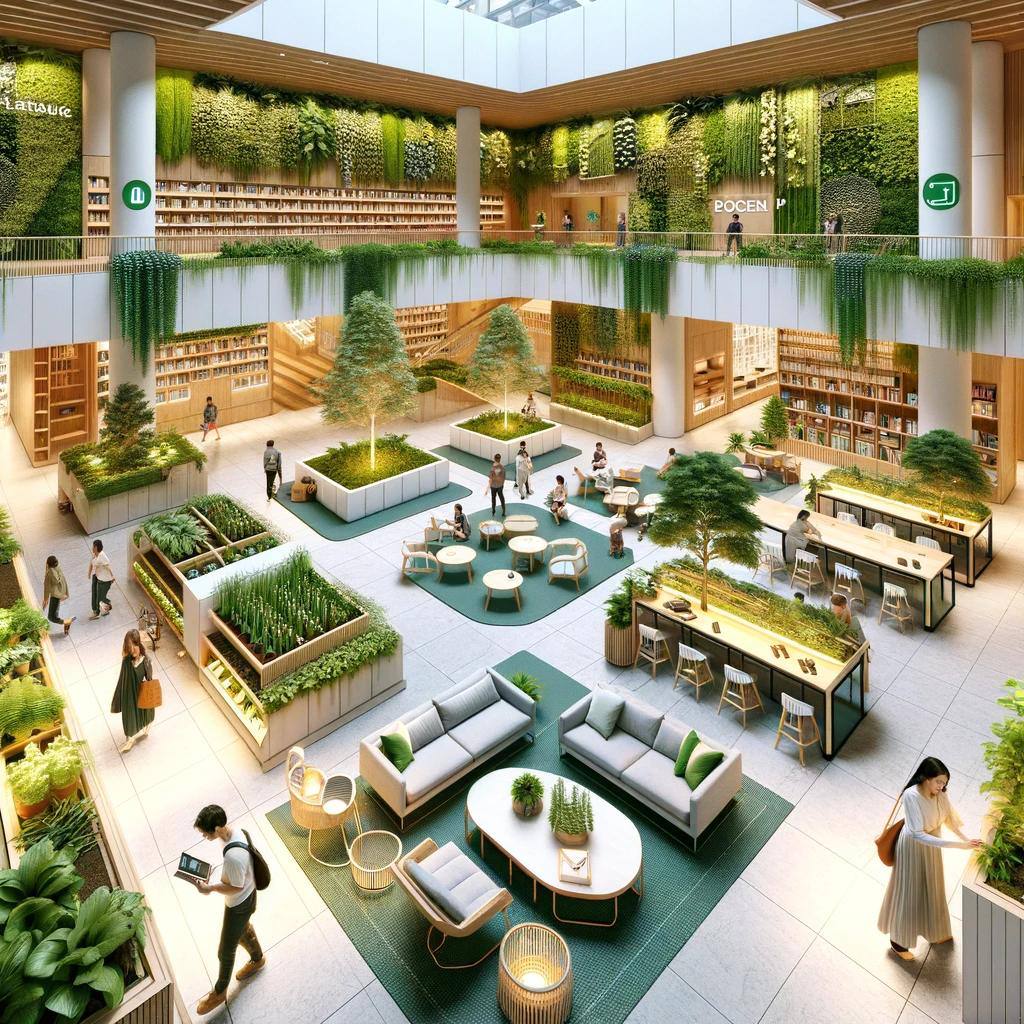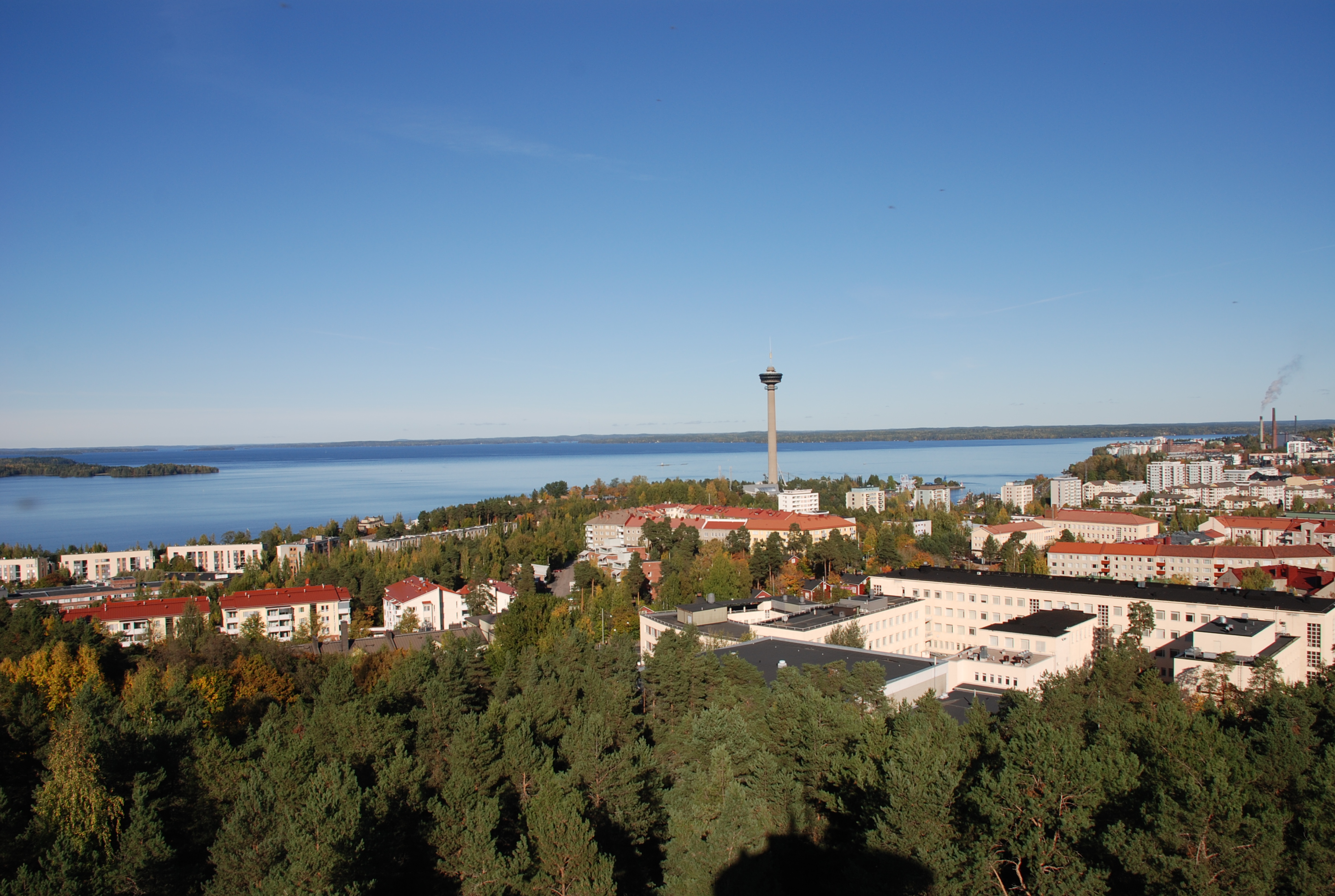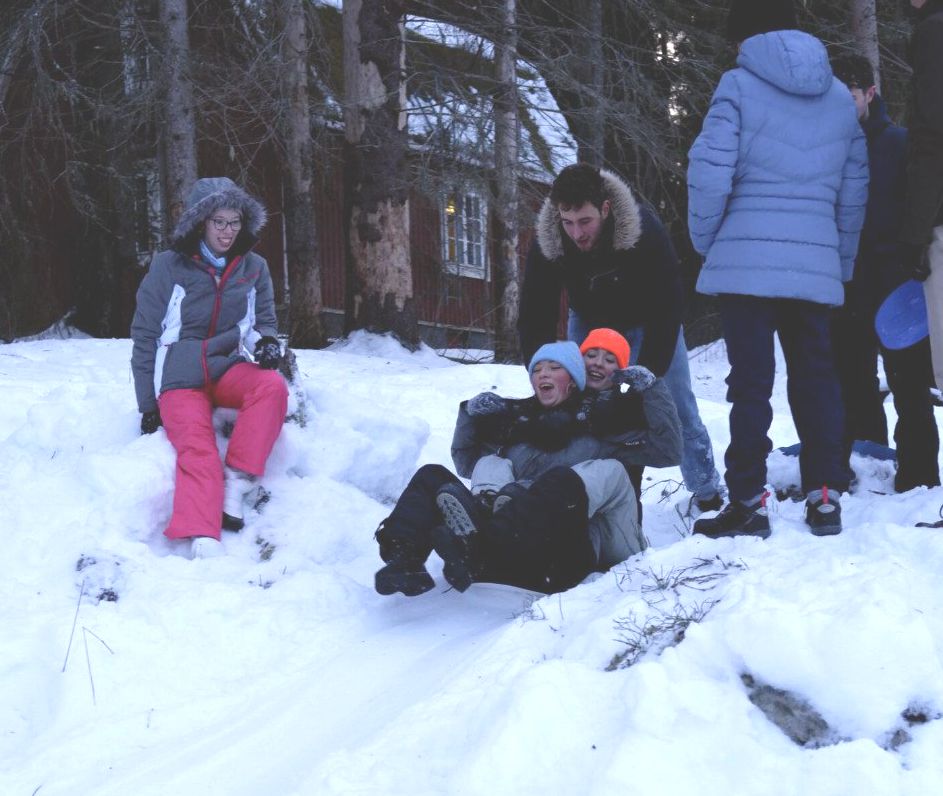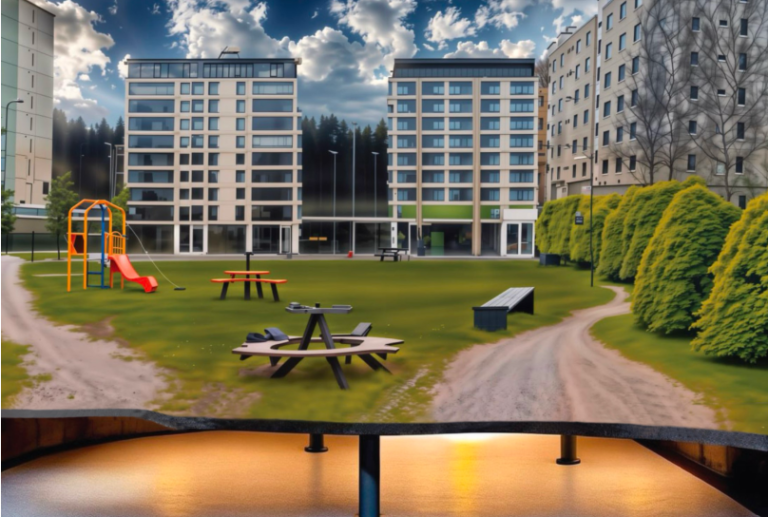The geographical location in the north is demanding for Finnish cities. However, during the field course, we noticed that besides the natural conditions, the local culture shapes the approach to the winter in the city as well. Of course, these two, nature and culture, are closely intertwined: in the traditional Finnish way of life, the seasons gave the rhythm for the year. On the contrary, in today’s urban life, it is typical to aim for productivity all year round, despite the changing seasons. As was pointed out during the discussion after one of the hackathon presentations, sometimes the perspective could be shifted back to valuing nature and the rhythm it gives us. It is difficult to accept the decreased productivity, and therefore we tend to neglect the fact that in wintertime it is normal to be more tired and need more sleep compared to the bright summertime. In cities, there are many ways to combat winter fatigue, from lighting to green indoor spaces and active transport, but hopefully life in cities can also allow room for rest and recharge in the winter. As our guests experienced, there are many ways to not only survive the winter but also to enjoy it in a Finnish way, such as by sledding and going to the sauna.
As it is quite evident, here in Finland the scarcity of natural light is very notable at times. Therefore, lighting has become a crucial aspect of urban planning. Appropriate street and urban space lighting not only enhances the usability of public spaces, but also contributes to the sense of safety. But, how else can we enhance residents’ lives with lighting? The answer is with light art. Light art installations in public spaces have been on the rise, bringing joy to people. We can take Tampere as an example. During the darkest months of autumn, Tampere has delighted its residents by projecting photos or moving light art onto the walls of public buildings and organizing spectacular shows at Tammerkoski, combining the elements of light, water, and sound. These types of attractions entice people to venture outdoors even in colder weathers, enhancing not only the well-being of residents but also the local economy.
Another one of the challenges faced by Finnish cities in winter that was identified during the field course was transportation by foot and bike. The students observed firsthand that the slippery conditions caused by the freezing temperatures can make it dangerous to walk and cycle outside. And this is confirmed by statistics as well, the National Institute for Health and Welfare estimates that every month in Finland during the winter, around 20,000 people are hurt when they slip and fall outside. The snow in winter also makes cycling a lot more demanding, and life in the city less accessible for those with activity disabilities. This also results in a shift of transport modes in the winter, as people switch towards public and private transport, putting more stress on the public transportation system as well as increasing emissions and use of space by private transport.
It is thus evident that adaptations to the winter conditions are necessary to ensure a safe, accessible, and sustainable environment. Adaptations for slippery conditions include the scattering of gravel on paths to improve traction, as well as the use of spikes on shoes and bicycle tires. The snow is dealt with by snowplowing and scattering salt where necessary. However, these measures are not enough to combat the increase in accidents and unsustainable transport modes. Moreover, the scattering of salt is unsustainable for the environment. When these issues were discussed during the field course, we learned that at least some other cities in Finland have shown that adaptations to winter conditions can be further improved. One example is the winter cycling infrastructure in Oulu as shown in this great video by Not Just bikes: “Why Canadians Can’t Bike in the Winter (but Finnish people can)”.
The images that Finnish winter might evoke often include lots of snow, and during the field course since the city center was covered with snow. However, our guests from different countries made us realize that a large amount of snow also means that no green spaces are visible in the city. Obviously, there are some green trees in the winter, too, but quite a significant proportion of the trees seem to drop their leaves for winter. We had a couple of interesting conversations since the students from Tampere University knew that the city is green during the summer, but not during winter. Wondering the topic in more detail, increasing the number of coniferous trees could increase the amount of all-year green vegetation in cities. Moreover, in their hackathon presentation, one group suggested an indoor green area as a solution for the poor access to green areas during winter. The aim was to offer the residents of Tampere a space with greenery and relaxation, and in the long run, the positive implications could also prevent some health-related issues. The idea of offering such a space for people made us realize that often we just want to get through the challenges we face during the winter. However, should we actually find ways to maximize our well-being during the winter months as well?

The Nordic winter, characterized by snow and darkness, is undoubtedly different from any other place in the world. This was also noticed by our guests. However, it can also be viewed not just as a challenge to overcome, but also as an opportunity to enhance urban living. Viewing our home cities with pairs of fresh eyes, in this case some Irish and Dutch eyes, can be incredibly helpful in trying to identify some areas for improvement and figure out how the necessary changes could be executed. At the end of the day, it is important to remember that the Finnish winter is unique and the goal of urban planning in winter should not be trying to change that, but rather to emphasize its beauty.
This blog was written by Rowan van der Kaaden, Aino Huujärvi, Venla Mäkinen, Tuulia Jukarainen and Veera Uusitalo in Urban Lab 2 in spring 2024.





